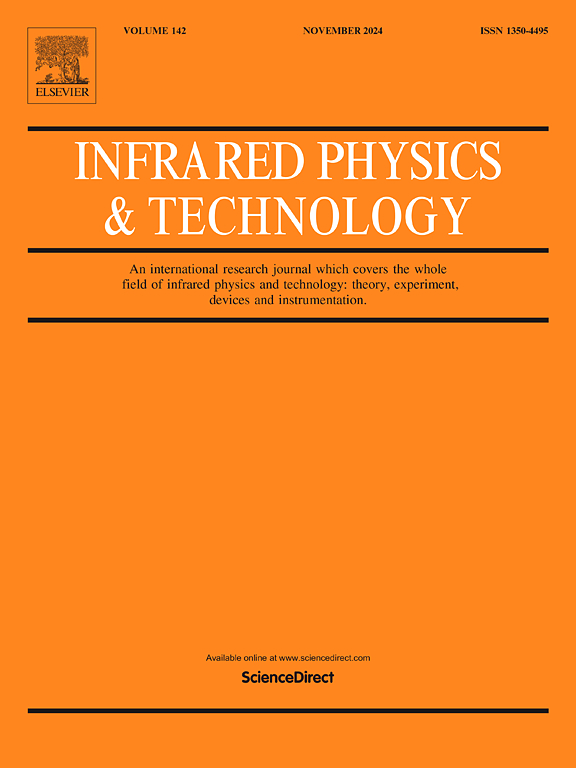A multi-scale infrared polarization image fusion method based on polarization-forming
IF 3.1
3区 物理与天体物理
Q2 INSTRUMENTS & INSTRUMENTATION
引用次数: 0
Abstract
In traditional infrared polarization image fusion, the degree of linear polarization (DoLP) image is frequently fused with the intensity image (). However, it is easily interfered by background noise, which degrades the quality of the fused image. To address this problem, a multi-scale infrared polarization image fusion method based on polarization-forming (PF) is proposed. Aiming at the sensitivity of the DoLP image to background noise, the approach is proposed to strip the information of the input image. The decomposition of the DoLP image is guided by controlling the inputs to the Stokes model. Subsequently, the ratio of local entropy (RoLEN) is employed to obtain an objective polarization vector image () for noise suppression. For the blurred detail, a fusion framework based on multi-scale hybrid window filtering (MSHWF) is constructed to fuse with . The framework adopts an improved filtered differential structure to separate edge and weak texture information. Then fusion strategies based on adaptive fractional saliency detection and adaptive energy are applied to highlight the target and its detailed information, respectively. Finally, the extracted sub-layer signatures are fused to obtain enhanced images with clear objectives and rich details. Qualitative and quantitative experimental results demonstrate the superiority of our method over other infrared polarization image fusion algorithms in several metrics such as information entropy, average gradient, and spatial frequency.
求助全文
约1分钟内获得全文
求助全文
来源期刊
CiteScore
5.70
自引率
12.10%
发文量
400
审稿时长
67 days
期刊介绍:
The Journal covers the entire field of infrared physics and technology: theory, experiment, application, devices and instrumentation. Infrared'' is defined as covering the near, mid and far infrared (terahertz) regions from 0.75um (750nm) to 1mm (300GHz.) Submissions in the 300GHz to 100GHz region may be accepted at the editors discretion if their content is relevant to shorter wavelengths. Submissions must be primarily concerned with and directly relevant to this spectral region.
Its core topics can be summarized as the generation, propagation and detection, of infrared radiation; the associated optics, materials and devices; and its use in all fields of science, industry, engineering and medicine.
Infrared techniques occur in many different fields, notably spectroscopy and interferometry; material characterization and processing; atmospheric physics, astronomy and space research. Scientific aspects include lasers, quantum optics, quantum electronics, image processing and semiconductor physics. Some important applications are medical diagnostics and treatment, industrial inspection and environmental monitoring.

 求助内容:
求助内容: 应助结果提醒方式:
应助结果提醒方式:


